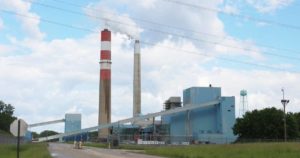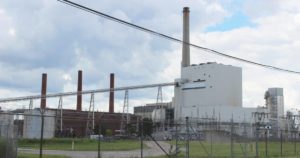Workers and Coal Ash Left Behind
On August 21st, Dynegy-Vistra announced closure of four coal-fired power plants in Illinois. The plants include those at Canton (Duck Creek Power Station), Hennepin, Havana, and Coffeen and account for more than 2,000 MW of the downstate Dynegy/Vistra fleet, or about 25%. Vistra committed to closing 2,000 MW, but chose to continue to run their dirtiest coal plants, like the Edwards Power Station near Peoria, while closing their cleanest, the Coffeen Power Station. A Chicago Tribune analysis found that the four plants that remain open account for 80% of the asthma-triggering sulfur dioxide emitted by the company.

These closures have been long expected. Vistra CEO has said coal “is on its way out,” and two years ago the company’s Dynegy division asked the Rauner administration to make it easier and more profitable for the company to close the four plants they announced.
A Just Transition
Vistra has provided less than 5 months notice of plant closure and no assistance to communities or workers in planning for this economic and energy transition. Illinois has an opportunity to support those most impacted by our changing energy economy. If passed, the Clean Energy Jobs Act would support a Just Transition by creating new business tax incentives, workforce training, and local tax revenue replacement. CEJA is the only legislation that puts communities and workers first.
Coal Ash Remains

When coal fired power plants close, they leave behind a toxic legacy in the form of coal ash. Long after the jobs have all left and the power plant stops pumping carbon and other pollutants into the atmosphere, the coal ash remains in unlined ponds continually leaking pollutants like arsenic, chromium and lead into our groundwater. Vistra would prefer to leave all of that coal ash in place under caps, but that could leave coal ash soaked in groundwater forever. That’s why we need to make sure Illinois’s coal ash rule, the result of passing SB 9, is as strong as possible to protect communities from ongoing pollution.







